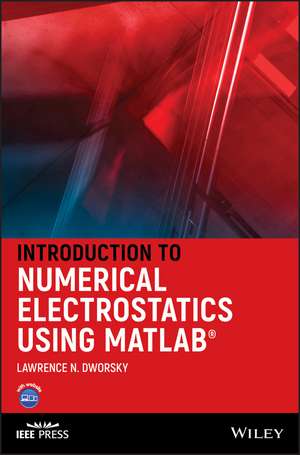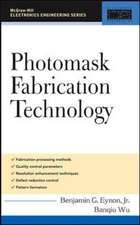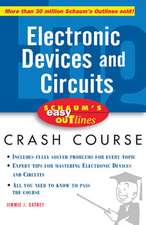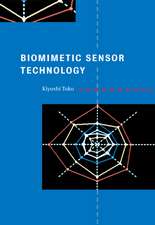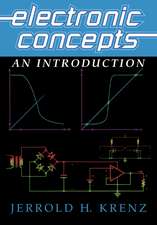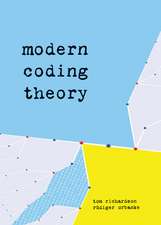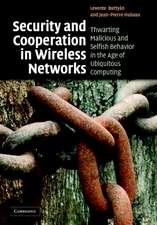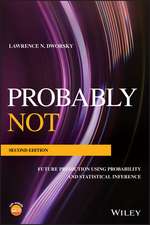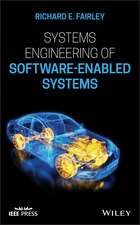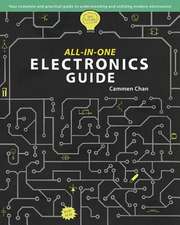Introduction to Numerical Electrostatics Using MATLAB: IEEE Press
Autor LN Dworskyen Limba Engleză Hardback – 8 mai 2014
Din seria IEEE Press
- 5%
 Preț: 615.08 lei
Preț: 615.08 lei - 23%
 Preț: 583.35 lei
Preț: 583.35 lei - 23%
 Preț: 650.34 lei
Preț: 650.34 lei - 20%
 Preț: 651.36 lei
Preț: 651.36 lei - 23%
 Preț: 717.55 lei
Preț: 717.55 lei - 23%
 Preț: 610.91 lei
Preț: 610.91 lei - 23%
 Preț: 829.29 lei
Preț: 829.29 lei - 23%
 Preț: 641.06 lei
Preț: 641.06 lei - 14%
 Preț: 825.51 lei
Preț: 825.51 lei - 14%
 Preț: 714.71 lei
Preț: 714.71 lei - 23%
 Preț: 659.33 lei
Preț: 659.33 lei - 9%
 Preț: 970.99 lei
Preț: 970.99 lei - 9%
 Preț: 798.94 lei
Preț: 798.94 lei - 9%
 Preț: 828.40 lei
Preț: 828.40 lei - 9%
 Preț: 872.80 lei
Preț: 872.80 lei - 9%
 Preț: 937.28 lei
Preț: 937.28 lei - 8%
 Preț: 468.85 lei
Preț: 468.85 lei - 9%
 Preț: 968.25 lei
Preț: 968.25 lei - 9%
 Preț: 973.00 lei
Preț: 973.00 lei - 9%
 Preț: 835.57 lei
Preț: 835.57 lei - 9%
 Preț: 973.35 lei
Preț: 973.35 lei - 9%
 Preț: 1004.15 lei
Preț: 1004.15 lei - 8%
 Preț: 638.25 lei
Preț: 638.25 lei - 20%
 Preț: 698.06 lei
Preț: 698.06 lei -
 Preț: 482.62 lei
Preț: 482.62 lei - 9%
 Preț: 700.94 lei
Preț: 700.94 lei - 9%
 Preț: 999.10 lei
Preț: 999.10 lei - 9%
 Preț: 969.92 lei
Preț: 969.92 lei - 9%
 Preț: 838.62 lei
Preț: 838.62 lei - 9%
 Preț: 782.68 lei
Preț: 782.68 lei - 9%
 Preț: 718.27 lei
Preț: 718.27 lei - 9%
 Preț: 944.57 lei
Preț: 944.57 lei -
 Preț: 333.28 lei
Preț: 333.28 lei - 9%
 Preț: 900.75 lei
Preț: 900.75 lei - 9%
 Preț: 705.28 lei
Preț: 705.28 lei - 9%
 Preț: 1086.40 lei
Preț: 1086.40 lei - 9%
 Preț: 678.62 lei
Preț: 678.62 lei - 9%
 Preț: 1005.04 lei
Preț: 1005.04 lei - 9%
 Preț: 772.75 lei
Preț: 772.75 lei - 9%
 Preț: 749.68 lei
Preț: 749.68 lei - 9%
 Preț: 959.84 lei
Preț: 959.84 lei - 9%
 Preț: 696.62 lei
Preț: 696.62 lei - 9%
 Preț: 715.53 lei
Preț: 715.53 lei - 8%
 Preț: 644.16 lei
Preț: 644.16 lei - 9%
 Preț: 1117.06 lei
Preț: 1117.06 lei - 9%
 Preț: 834.41 lei
Preț: 834.41 lei - 9%
 Preț: 1441.49 lei
Preț: 1441.49 lei - 9%
 Preț: 803.36 lei
Preț: 803.36 lei - 9%
 Preț: 962.35 lei
Preț: 962.35 lei
Preț: 583.23 lei
Preț vechi: 633.94 lei
-8%
Puncte Express: 875
Preț estimativ în valută:
103.25€ • 120.23$ • 89.70£
103.25€ • 120.23$ • 89.70£
Carte tipărită la comandă
Livrare economică 23 februarie-09 martie
Preluare comenzi: 021 569.72.76
Specificații
ISBN-13: 9781118449745
ISBN-10: 1118449746
Pagini: 464
Dimensiuni: 184 x 254 x 28 mm
Greutate: 0.95 kg
Editura: Wiley
Seria IEEE Press
Locul publicării:Hoboken, United States
ISBN-10: 1118449746
Pagini: 464
Dimensiuni: 184 x 254 x 28 mm
Greutate: 0.95 kg
Editura: Wiley
Seria IEEE Press
Locul publicării:Hoboken, United States
Public țintă
Graduate students in engineering and physics; students in electrostatics courses; working engineers and physicistsCuprins
Notă biografică
Lawrence N. Dworsky earned his PhD and BEE in Electrical Engineering at New York University and his Masters of Electrical Engineering at Princeton University. He was an Assistant Professor of Mathematics at Union Community College and an Assistant Professor of Electrical Engineering at Columbia University. From 1974 until 2002, Dr Dworsky served on the technical staff of Motorola, Inc. He has 39 issued U.S. Patents and has authored numerous technical articles. This is his fourth book.
Descriere
Readers are guided step by step through numerous specific problems and challenges, covering all aspects of electrostatics with an emphasis on numerical procedures. The author focuses on practical examples, derives mathematical equations, and addresses common issues with algorithms.
